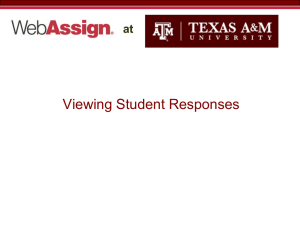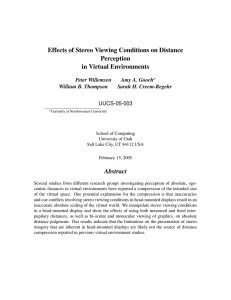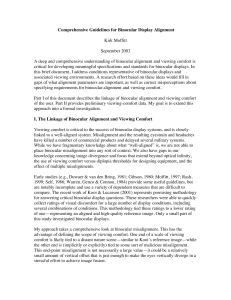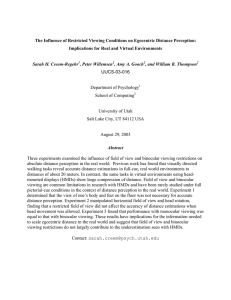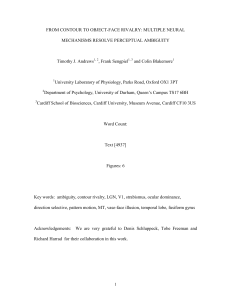The Influence of Restricted Viewing Conditions on Egocentric Distance Perception:
advertisement
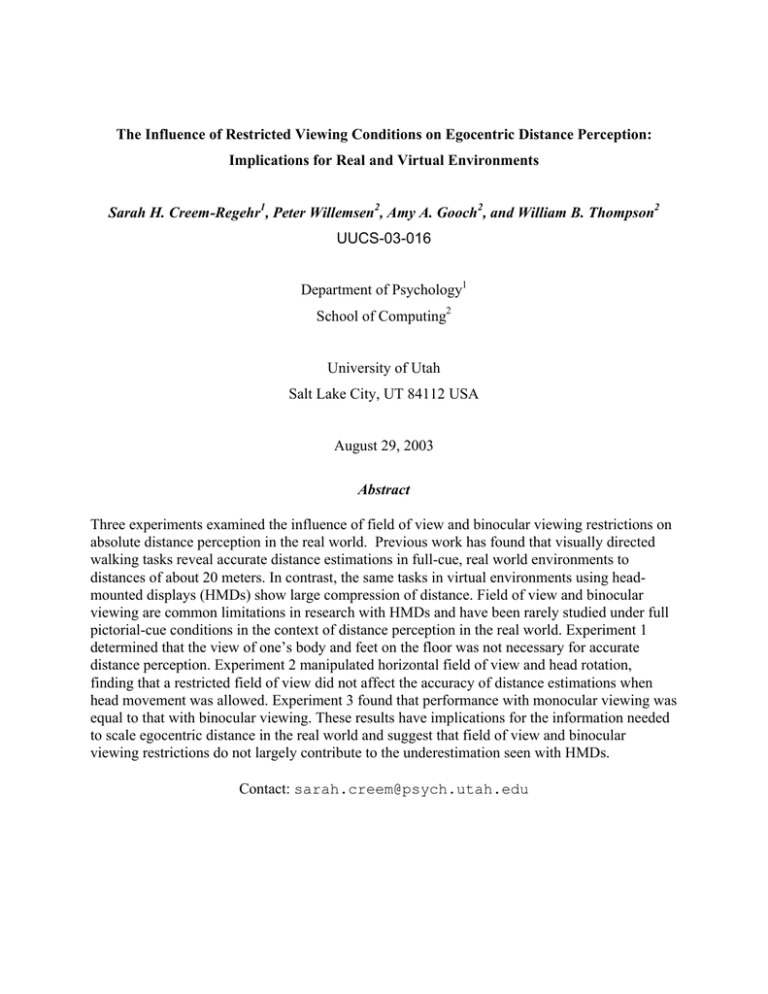
The Influence of Restricted Viewing Conditions on Egocentric Distance Perception: Implications for Real and Virtual Environments Sarah H. Creem-Regehr1, Peter Willemsen2, Amy A. Gooch2, and William B. Thompson2 UUCS-03-016 Department of Psychology1 School of Computing2 University of Utah Salt Lake City, UT 84112 USA August 29, 2003 Abstract Three experiments examined the influence of field of view and binocular viewing restrictions on absolute distance perception in the real world. Previous work has found that visually directed walking tasks reveal accurate distance estimations in full-cue, real world environments to distances of about 20 meters. In contrast, the same tasks in virtual environments using headmounted displays (HMDs) show large compression of distance. Field of view and binocular viewing are common limitations in research with HMDs and have been rarely studied under full pictorial-cue conditions in the context of distance perception in the real world. Experiment 1 determined that the view of one’s body and feet on the floor was not necessary for accurate distance perception. Experiment 2 manipulated horizontal field of view and head rotation, finding that a restricted field of view did not affect the accuracy of distance estimations when head movement was allowed. Experiment 3 found that performance with monocular viewing was equal to that with binocular viewing. These results have implications for the information needed to scale egocentric distance in the real world and suggest that field of view and binocular viewing restrictions do not largely contribute to the underestimation seen with HMDs. Contact: sarah.creem@psych.utah.edu
